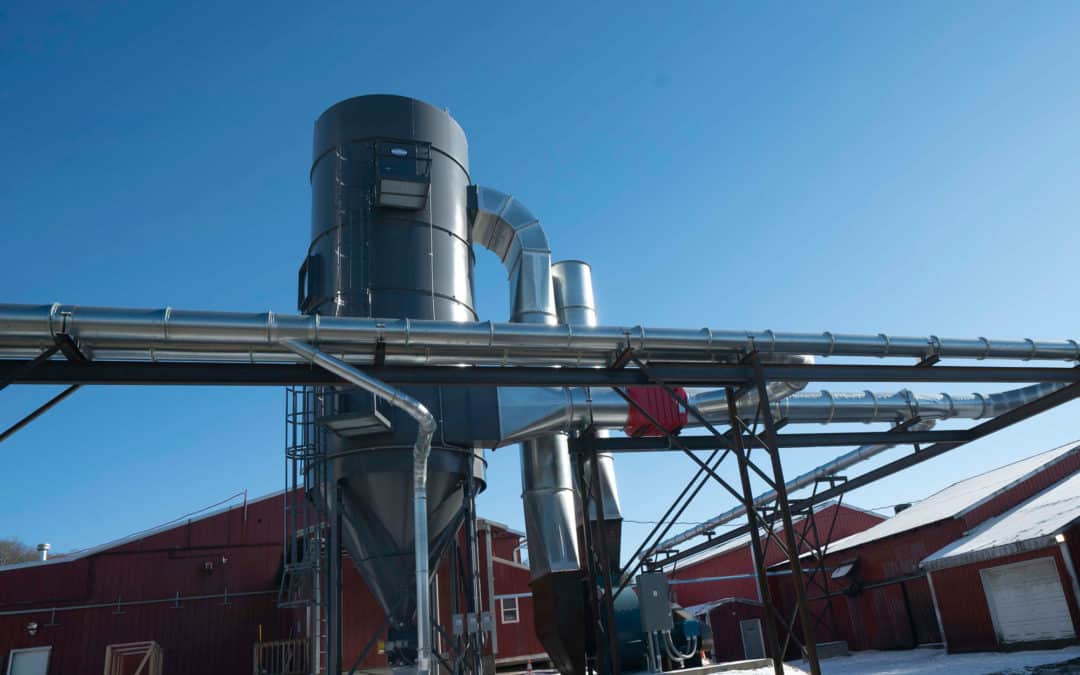
by Erin Long | Jul 23, 2019 | Case Studies
Problem:
A PVC recycling company planned an expansion project in Nevada. This company pulverizes, then recycles PVC products. However, they encountered air quality standards much more rigid than those they had dealt with before.
“Our main concern was a blue smoke emitting during this process,” said Kurt, Director of West Coast Operations. The company needed a guarantee that its new dust and fume collection system would meet air quality standards at their new location. Other dust collector manufacturers could not offer them the guarantees that they required for their expansion project.
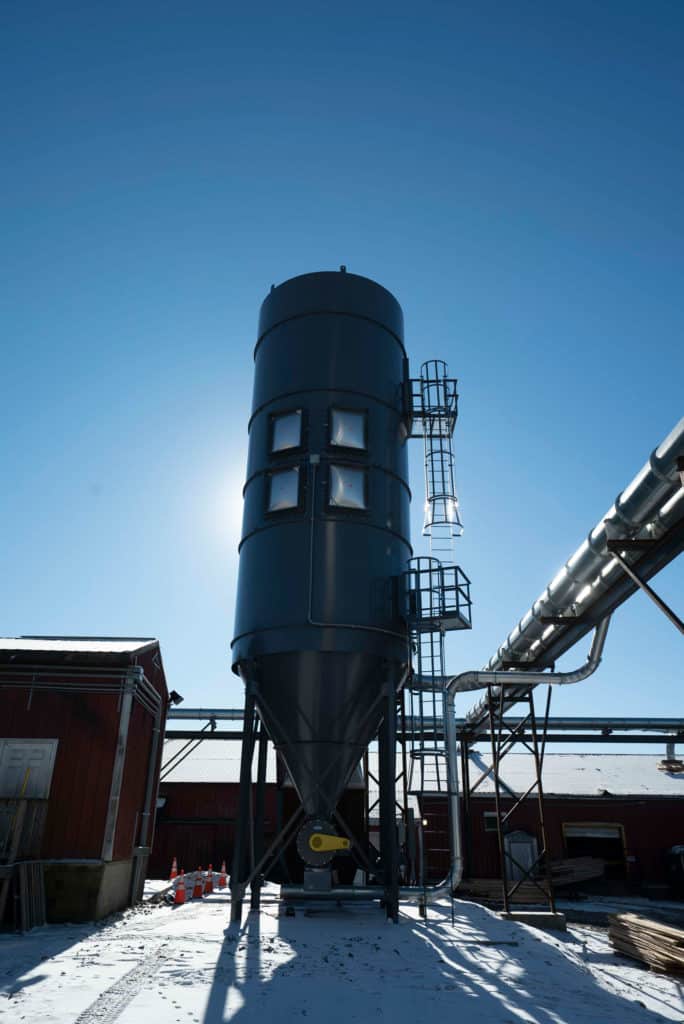 Solution: Tailored Baghouse for PVC Recycling Process
Solution: Tailored Baghouse for PVC Recycling Process
When they contacted Imperial Systems, President and CEO Jeremiah Wann was willing to make the guarantee and stand behind it. Imperial Systems designed a BRF baghouse for the company. To make sure the PVC recycling process met air quality standards, the system also included an after-filter plenum. The after-filters made sure that even traces of the dust and smoke could be captured.
As required by Nevada law, the company had a licensed mechanical contractor onsite during installation. Imperial Systems also sent a technical supervisor to oversee the process. Kurt noted that the installation process went very smoothly.
After connecting and running the system, Kurt knew Imperial Systems was living up to their guarantee. “There’s no visible smoke, and the odor is gone.” The system managed the larger particles and the fine dust produced in the PVC recycling process. The PVC pulverizers no longer emitted fumes or odors into the atmosphere.
Feedback:
The new dust and fume collection system meets the company’s needs. It also meets all their air quality requirements. Kurt felt that Imperial Systems stood behind their guarantee. “It is performing exactly as we were told it would,” he said. “The system has been in operation for over a year now, and there’s no hint of dust or fumes from the system’s discharge.”
Kurt recommends Imperial Systems to anyone struggling with dust and fume collection challenges. “Our collector is doing exactly what Imperial said it would do, and in business, that’s the bottom line,” he said. The proof is always in the results, and Imperial Systems delivered.
Kurt also expressed satisfaction with the service received from the Imperial Systems team. “I’m very satisfied. Everyone I had dealings with has been helpful, knowledgeable, and pleasant. Imperial worked everything out to my satisfaction, which made it a good experience overall.”
Contact us to learn more about this case study or how we can help solve your own dust or fume collection problem.
Read more
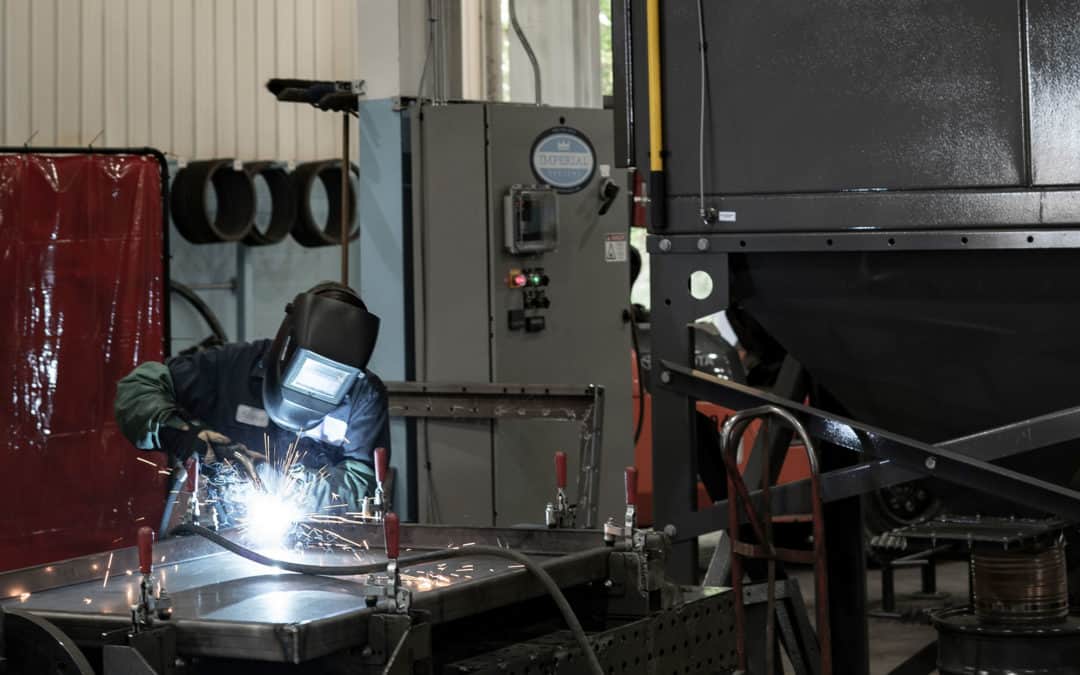
by Erin Long | Jul 23, 2019 | Case Studies
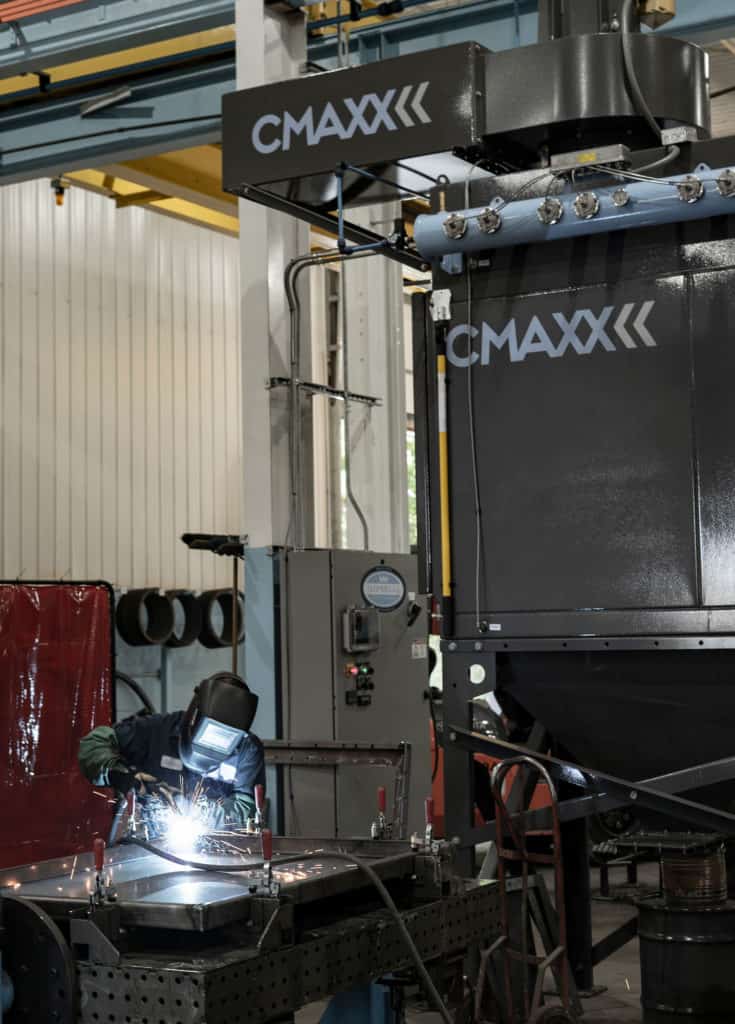 Problem:
Problem:
Masaba is a metalworking fabrication company. They manufacture bulk handling equipment for mining, agriculture, and other industries. Because of the size of the equipment, the facility has high ceilings and large open workspaces. This allowed weld smoke and fumes to accumulate in the air. They needed an effective shop exhaust system.
The company used an old, roof-mounted HVAC unit as their shop exhaust system to pull weld fumes from the facility. But the amount of weld smoke produced during daily production overwhelmed the air extraction unit. Consequently, the unit was returning dirty air back into the facility. The president of Masaba, Jerad Higman, certainly knew that his employees needed clean air to breathe. Further, they needed and a clean working environment.
Solution:
Jerad contacted representatives from several of the industry’s biggest names in dust and fume collection. All offered their industrial exhaust systems for the weld fume problem. However, Jerad met Jeremiah Wann, president and CEO of Imperial Systems. The two developed a strong working relationship. Jerad trusted Jeremiah with producing a shop exhaust system for his weld smoke.
As a solution, Jeremiah and Jerad chose an ambient system. This type of system circulates all the air in the facility through the filters and returns clean air. The company installed three CM020 units, CMAXX units with 20 cartridges each. The system also included hoods over each welding bay. These would capture weld smoke before it could escape into the rest of the facility.
Feedback on New Shop Exhaust System:
With the new system installed, the company quickly saw the weld smoke start to vanish. Circulating all the air in the facility six times per hour, the new system had the power to get rid of the lingering smoke and fumes. Instead of a modified HVAC system, Masaba now had one designed to handle large-scale weld smoke extraction.
“I was very impressed at how effective the CMAXX collectors were operating,” Jerad said. “To this day, I have not experienced any problems with them. I would highly recommend Imperial Systems products to anyone that has issues with the air quality in their shop. Their level of expertise and service is just outstanding.”
Imperial Systems prides itself on developing strong relationships with customers. We meet customers’ needs by listening and understanding their unique problems. While Jerad and Masaba could have chosen any major dust and fume collection company, they found that the personal service from Imperial Systems helps us stand out.
Confused over all the shop exhaust systems available? Contact us at Imperial for a tailored solution if you need an indoor exhaust system, whether it’s an ambient or source capture exhaust system – or both!
Read more
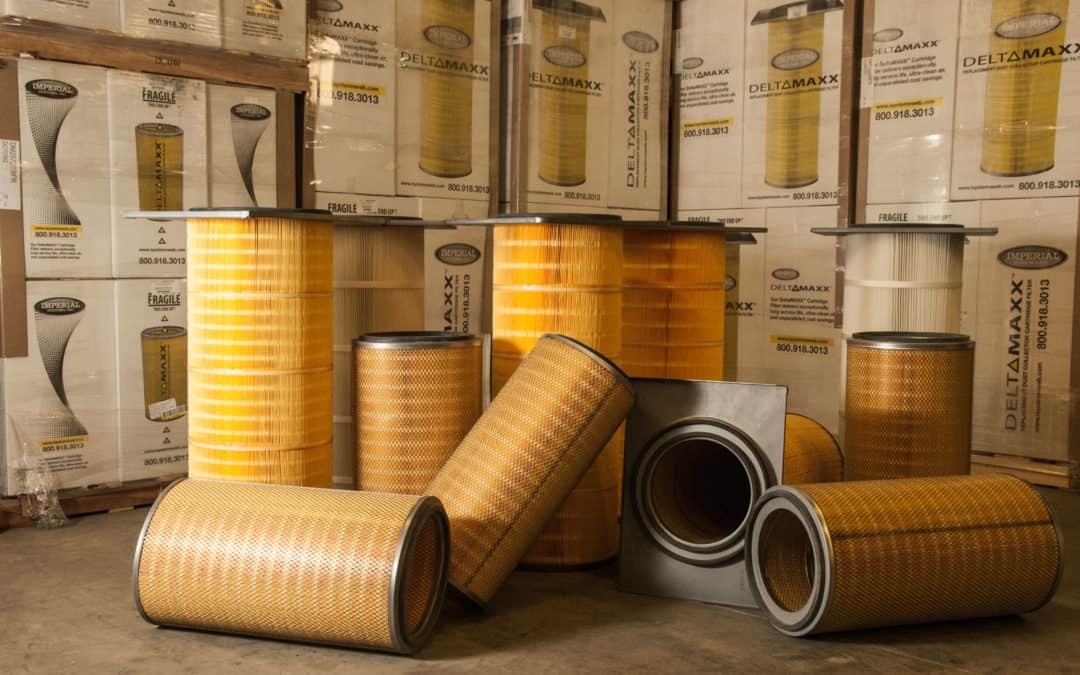
by Erin Long | Jul 23, 2019 | Case Studies
The electrostatic powder coating method of dry finishing metal parts is a fantastic technology and process. There are so many advantages over liquid coating for manufacturers, but it does present a challenge for dust collection. Bobby owns a small shop in rural Alabama that has an electrostatic powder coating line. He faced this inherent challenge but found the solution.
Problem: Dust Build-up from Electrostatic Powder Coating
Bobby had installed a dust collector on his paint booth. However, the company would regularly experience small flash ignitions inside the collector. Above all, his concern was that one of these flash ignitions might harm one of his employees.
Electrostatic powder coating technology creates a charge on the powder material, which was making it stick to the filters. Therefore, Bobby wanted to find grounded filters to prevent static build-up. However, his current filter supplier couldn’t provide him with a grounded filter that would work in his collector.
Solution:
An Imperial Systems sales representative helped Bobby find a match for his current filters. Unlike his previous filter company, we were also able to provide him with the grounded filters he needed. The recommended solution was a DeltaMAXX aluminum spunbond filter with a connected ground wire.
Standard filter media cannot solve all dust collection problems. Sometimes customers and dust collection professionals need to work together to find an unusual solution. As a result, the filter chosen for Bobby’s electrostatic powder coating application was not a standard one but solved his problem.
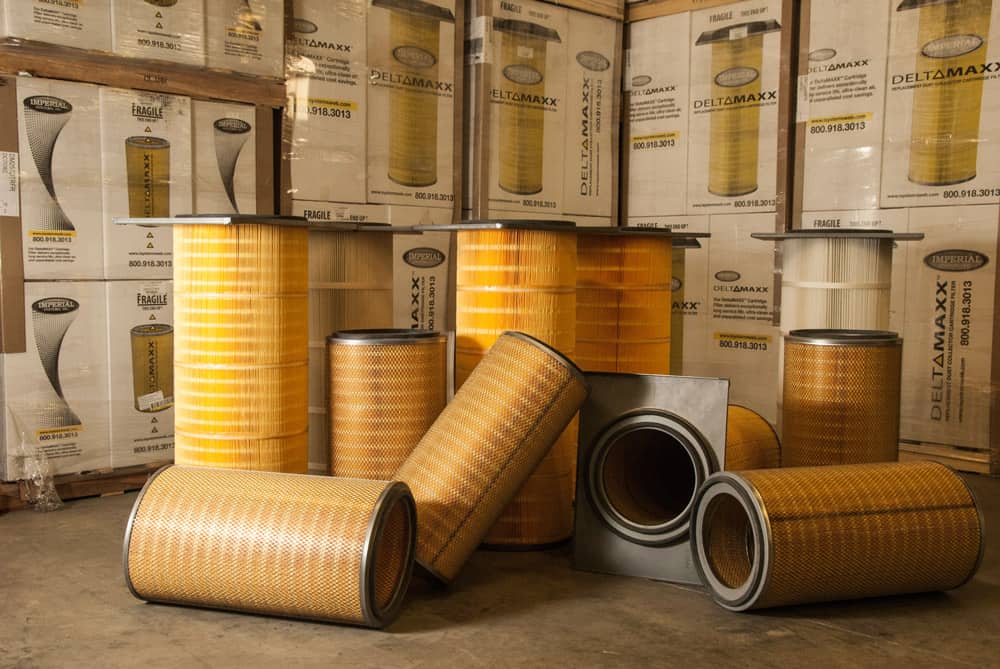
Feedback:
Bobby reports that he had a very positive experience working with Imperial Systems. “They helped me find what I needed. I’ll definitely come back for filters again when I need them,” he said. The company finally stopped experiencing flash ignitions with the new filters installed.
“We’ve had no more problems with static, and the filters are doing exactly what they’re supposed to do,” Bobby said. With properly grounded filters, the company no longer deals with static build-up or the risk of injury to workers.
Imperial Dust Collection for Electrostatic Powder Coating
Even if your problem is unusual or requires a special solution, Imperial Systems will work with you to solve it. No matter how many filters you’re buying, we will do our best to solve your problem. Because we have a huge library of filters, we can match almost any filter with a DeltaMAXX replacement. Contact us to learn more about this case study, DeltaMAXX filters, or how we can help solve your own dust collection problem.
Read more
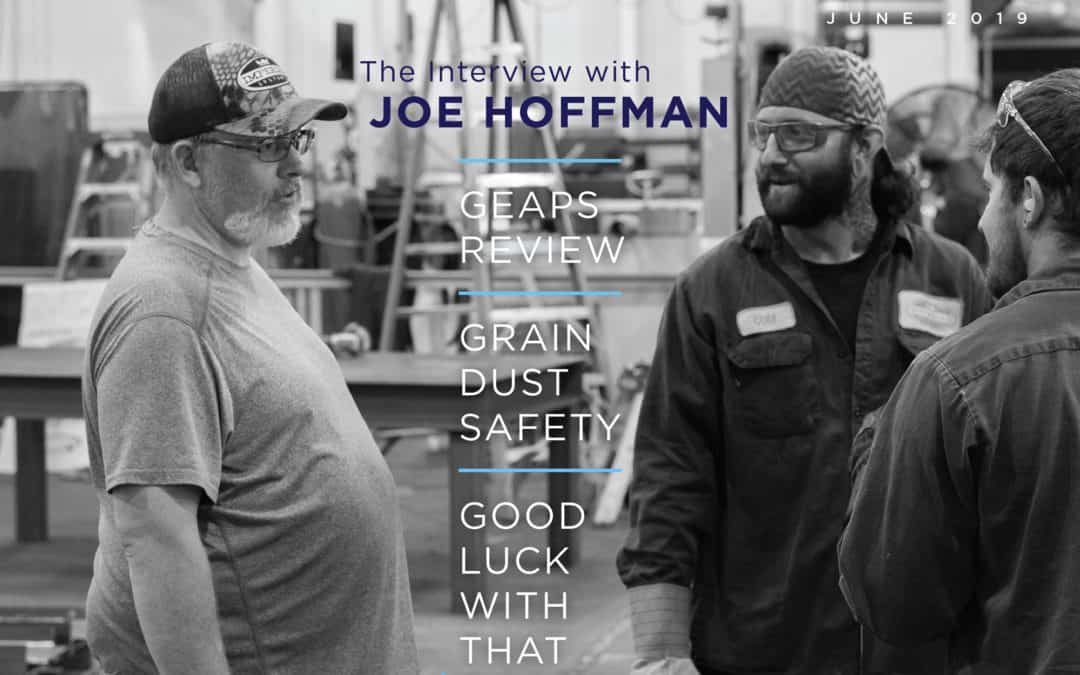
by Erin Long | Jul 19, 2019 | Uncategorized
Take a look at Dusty Jobs 9! We talk about the GEAPS show in New Orleans earlier this year as well as discussing safety in grain processing facilities. Charlie is back for an extended version of ‘Good Luck With That’, and we interview our plant manager, Joe Hoffman. If you would like a printed hard copy of this issue of Dusty Jobs, contact your Imperial Systems, Inc. representative.
Click the cover to download and print the newsletter.
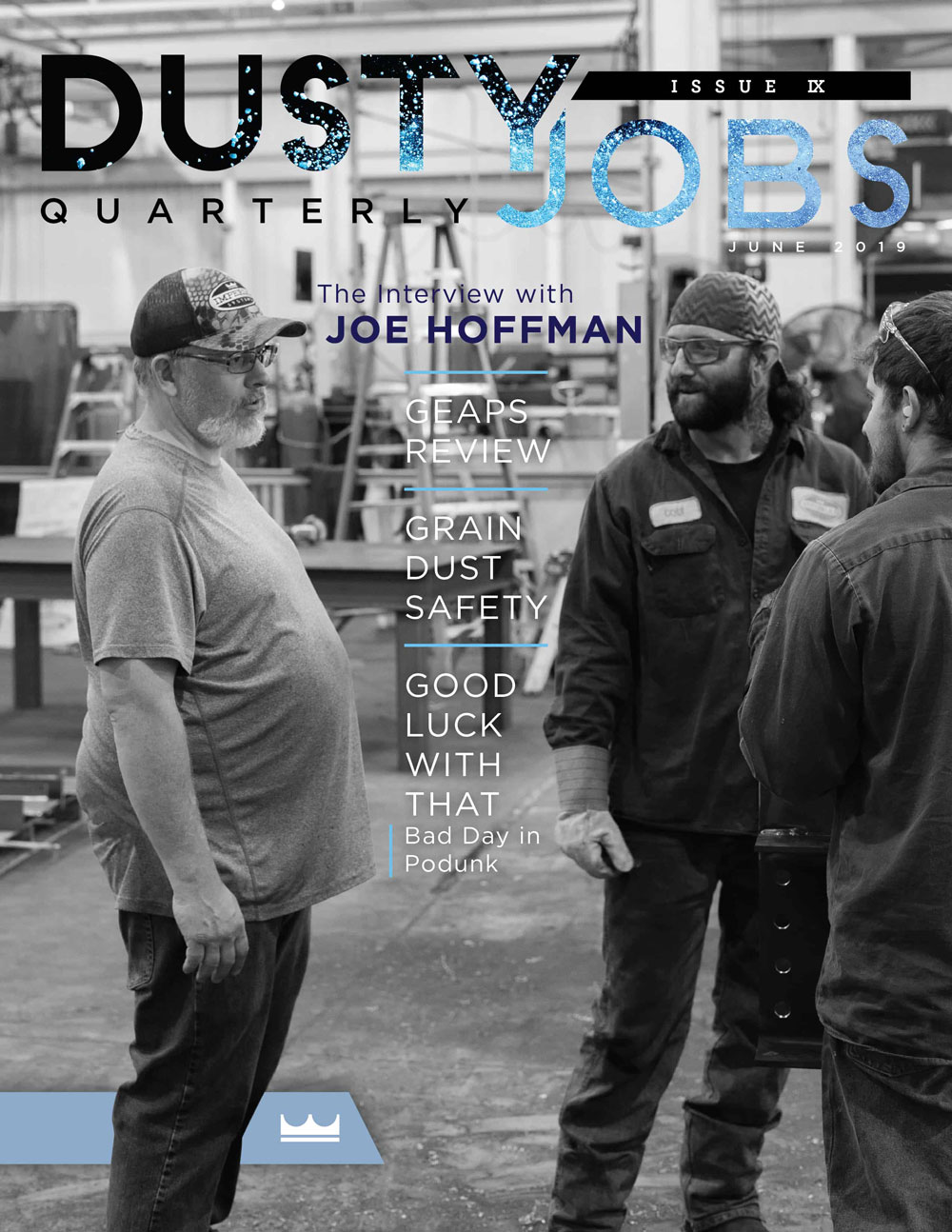




A Letter from the Production Control Manager
 I started working at Imperial Systems in February 2015 as an Accounting Clerk. As the company grew over the next few years, I started taking on more responsibilities. I started helping with coordinating production, keeping information flowing between accounting and the shop. I worked with them to set schedules for shipping, hours planned for each job, and exactly where the job was with current hours.
I started working at Imperial Systems in February 2015 as an Accounting Clerk. As the company grew over the next few years, I started taking on more responsibilities. I started helping with coordinating production, keeping information flowing between accounting and the shop. I worked with them to set schedules for shipping, hours planned for each job, and exactly where the job was with current hours.
As of last year, I moved into a new role as Production Control Manager. This takes the production control responsibilities I already had and kicks them up a notch. I’m still transitioning into this role, since I’ve been helping with accounting while someone was out on leave. Now, I’m looking forward to diving in and getting a good grasp on all the new responsibilities in front of me.
With the company growing, I’m going to be responsible for handling our shop schedule and keeping production on track. I’ll help solve problems and coordinate any changes that need to be made. I’ll keep track of the shop’s capacity and monitor when we’re over or under capacity. There’s a lot to manage with so many projects being scheduled, in production, and shipping out.
As a young girl, I would go to take-your-daughter-to-work events with my dad, and I always finished the day with the feeling that his company and co-workers were like part of his family. The company made sure to take care of their employees and truly cared about the employees’ success.
Since then, I have always wanted to find that in an employer and until Imperial Systems, I had not found my home in the business world. Shortly after starting, though, and with each additional day I work here, I realize just how much Jeremiah cares about this company as well as everyone who works here. Each day I am excited to wake up and come to work to help this team reach its goals. I love that I am challenged each day to come up with something that will better myself, which will directly lead to our company’s success.
I am just so thankful every day to be able to say I found my “work” home and gained 50-some “family” members, and I do not know if I would have been able to find this working anywhere else.
– Kaylee Smead, Production Control Manager
Read more
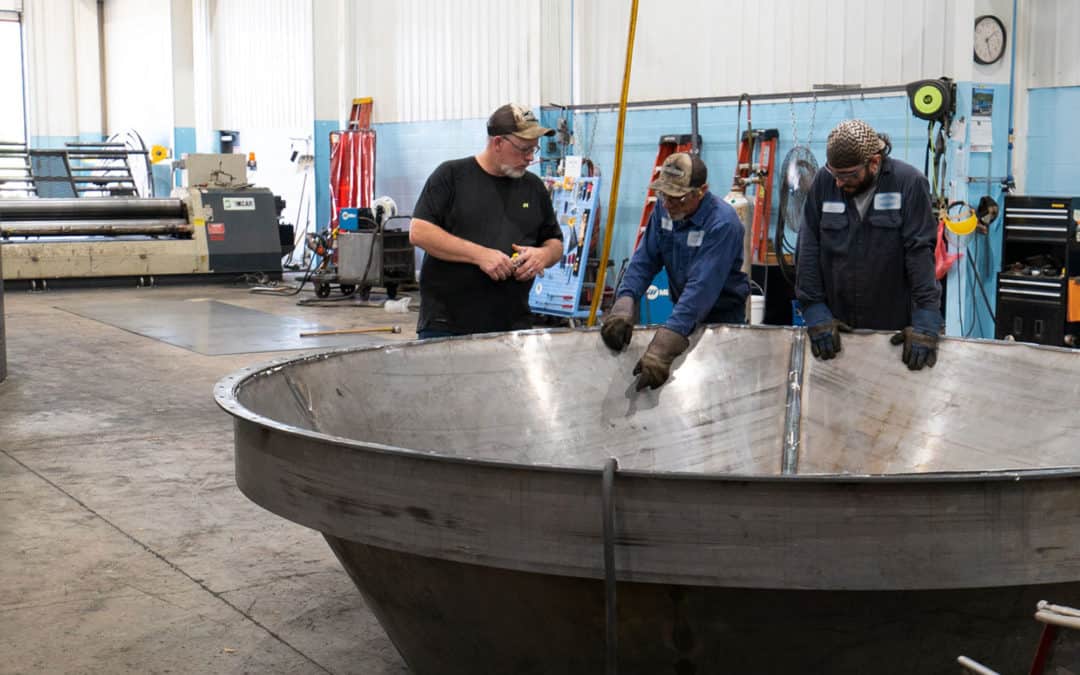
by Erin Long | Jul 19, 2019 | Hidden from Archive
Joe has been with Imperial Systems for twelve years. In his spare time he enjoys fishing and hunting. He also enjoys spending time with his wife, four children, and three dogs.
Q: How long have you been here?
Twelve years. I started off welding duct in the old building in Jackson Center, working second shift. I built the first CMAXX, and after that they paired me up with Higby and we built them together after that.
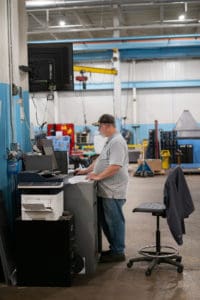 Q: When did you move up to management?
Q: When did you move up to management?
That was about four or five years ago. I was already a manager, overseeing all the guys, and then when the plant manager left I just kind of took over all of that too. I’ve been a supervisor for a while. I like it. It’s a challenge, keeping all the guys in line, making sure everything is done right. You can’t check everything… you could look at the same piece ten times and still not see everything. But usually things move really smoothly.
Q: You like what you do now?
Yeah, I like it. There’s a lot to do, keeping track of all the shipping dates and where everything is in production, keeping an eye on everything, teaching the new guys when they come in.
Q: What’s it been like since we moved over to the new building?
A lot busier. It went smoother than you’d think, though. Not many hiccups, considering all the changes. The powder coating was new and we had some glitches with that, but we learned a lot about it, and now it usually goes smoothly too.
Q: How many kids do you have?
Four, two boys and two girls. The youngest one is sixteen. The other ones are out of school now, and the one works here now.
Q: What’s it been like having your son working here?
He’s been here about two years. He’s still learning. He graduated from high school and was looking for a job, and this is a good place to work. He works just like everybody else.
Q: What do you do when you’re not here?
If I’ve got free time I do some fishing, either the Allegheny or at Pymatuning. I take the boys with me, but the girls don’t want to go. I’ll go camping sometimes. My family has a cabin, and my wife’s family has a cabin that’s just a few minutes from the river.
Q: Any sports you follow?
I watch the Steelers, but I wouldn’t say I’m a die‑hard fan. I’ll just watch football, whoever is playing. I’m not a serious sports fan. My son played football in school.
Q: Other hobbies?
I go hunting. I got a couple of doe this past season. Got most of the meat ground up. I used to do all the cutting up myself, but it takes forever, so I just take them to get done now. I’ve got three dogs. One of them is a beagle, but he never turned out to be a hunting dog. Just didn’t want to hunt. We ended up bringing him in the house. He got housebroken really easy, just followed the other dogs.
Q: So after twelve years, what can you say about working here?
It’s a good place. It’s definitely the best place I’ve ever worked. I’ve learned a lot working here. I’ve gotten to build pretty much everything we make here. I get to teach all the new guys, and I like doing that.
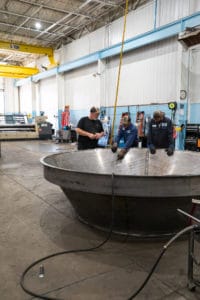 Q: It’s a good work environment?
Q: It’s a good work environment?
It’s a really good bunch of guys. We all get along. We joke around a lot. It’s a good group to work with.
Q: Everything usually flows pretty smoothly?
Usually, it goes well. Sometimes dates change because the customer keeps changing details on the project, and engineering has to do a new drawing for approval… everything has to go from sales to engineering to production, so sometimes it takes time to get to us. Even when we get really busy, we keep things moving.
Q: Any good stories you want to tell?
Absolutely, but not any of them that I can tell you!
Read more

 Solution: Tailored Baghouse for PVC Recycling Process
Solution: Tailored Baghouse for PVC Recycling Process
 Problem:
Problem:







 I started working at Imperial Systems in February 2015 as an Accounting Clerk. As the company grew over the next few years, I started taking on more responsibilities. I started helping with coordinating production, keeping information flowing between accounting and the shop. I worked with them to set schedules for shipping, hours planned for each job, and exactly where the job was with current hours.
I started working at Imperial Systems in February 2015 as an Accounting Clerk. As the company grew over the next few years, I started taking on more responsibilities. I started helping with coordinating production, keeping information flowing between accounting and the shop. I worked with them to set schedules for shipping, hours planned for each job, and exactly where the job was with current hours.
 Q: When did you move up to management?
Q: When did you move up to management? Q: It’s a good work environment?
Q: It’s a good work environment?